My friend, Kelly (she's from Taiwan), had been preparing to do a very small-scaled short film, and had enlisted Kong's help to shoot it.
She had wanted to shoot her place in a traditional Japanese house, and so her friend Anna, offered to let Kelly use her great-grandmother's house in Kamakura.
Yesterday, Kong and Kelly decided to go to Kamakura to look at Anna's house.
I decided to tag along because I've never been to Kamakura before.
We arrived in the morning at 10 to meet up with Anna. Kelly's the one with a white cap and Anna's the one on the phone.

That's the Kamakura station.
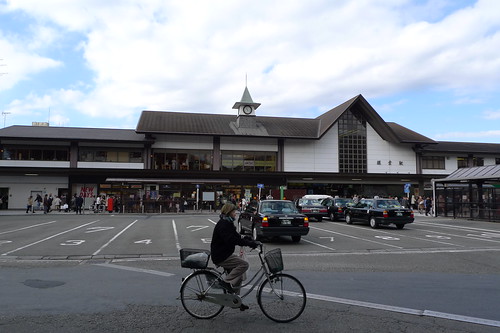
We started walking to Anna's great grandmother's house.

.
I think it was a 10-15 minute walk before we reached the house. Anna's great grandmother is already 100 years old and she had been living by herself in this house most of the time. The house had been sold to someone else recently, but the new tenants haven't move in.
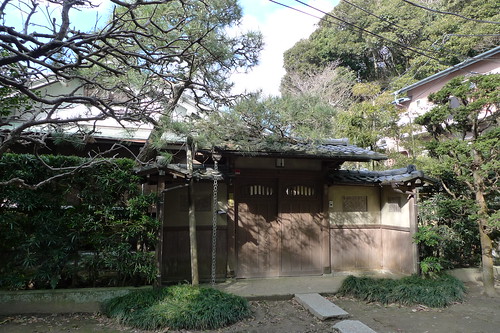
As I entered the place, I cannot help but think of the very fine anime film, SUMMER WARS, by Mamoru Osoda, when Kenji followed Natsuki back to her 90-year-old great-grandmother's place.
Click here if you can't see embedded video
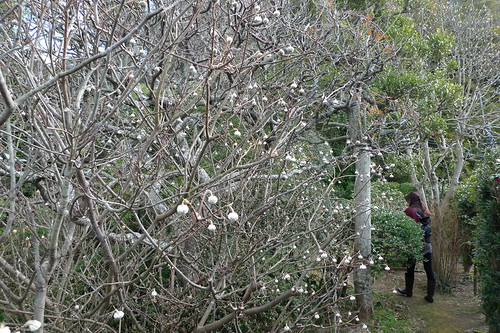
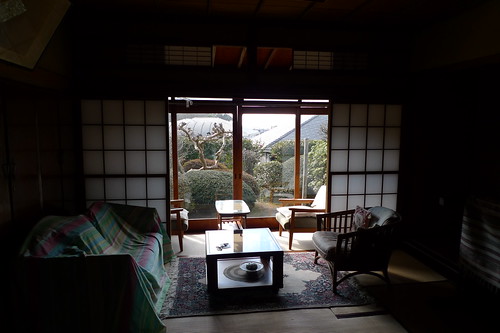
Anna paid her respects to her great grandfather.
Click here if you can't see embedded video
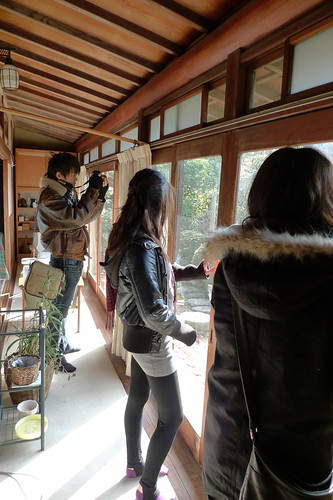


click here if you can't see embedded video

Anna's great grandmother's bedroom.
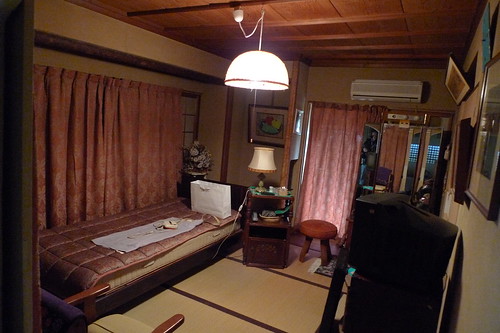
She was a painter and also a fashion designer.

Anna told me that this is a photo of her great grandmother, and Giorgio Armani.
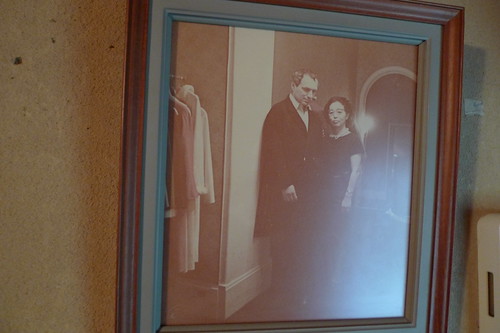
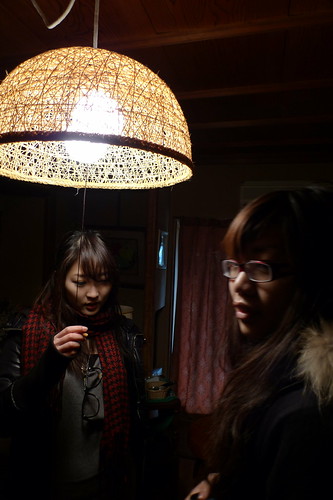
As Kong and Kelly discussed the film, and the storyboards, I rested here, there was a heater underneath the table.

We then headed off for lunch.

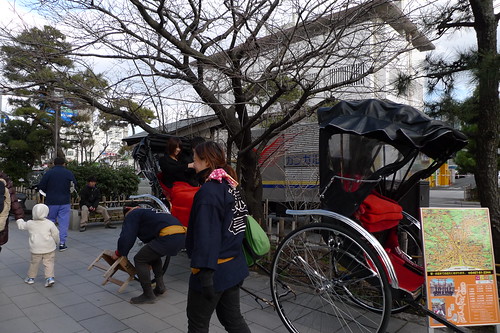
I opted for some curry.
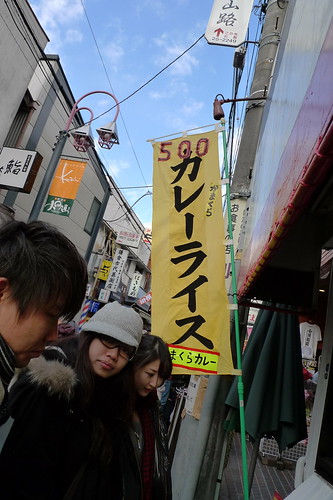
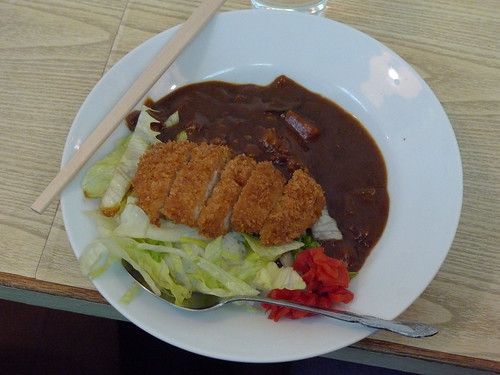
Anna had mentioned that Kamakura is known more for its confectionery and desserts, so it wasn't so surprising that the curry was a little sweeter than usual.
I decided to sample some of the sweet stuff in Kamakura.
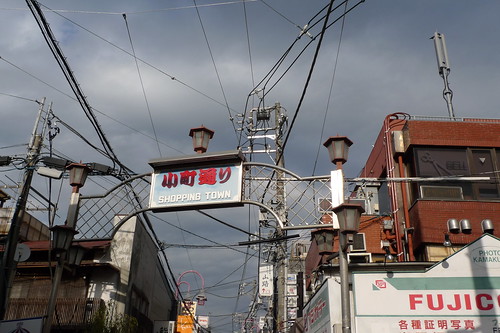
That's a dango. It's some sort of rice dumpling, covered in red bean paste (there are different flavours to choose from)

And these were Kelly and my cups of amazake. It's a traditional sweet, low-alcoholic Japanese drink made from fermented rice.
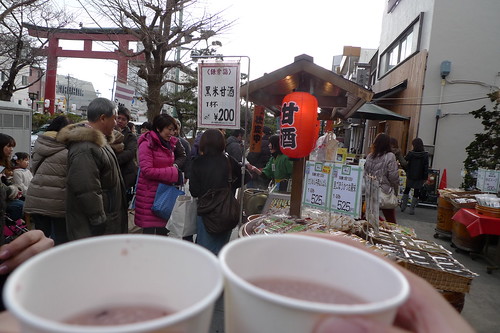
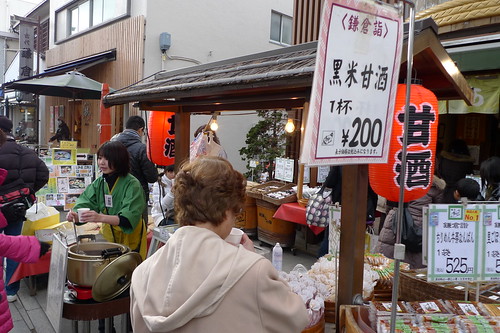
We headed to the Tsurugaoka Hachiman-gū, the most important shrine in Kamakura. It was a Buddhist temple and was far larger than it is today. Until the '1868 Shinto And Buddhism separation order', when the Meiji government, for political reasons, decided not to mix Buddhism and Shinto, many Buddhist-related buildings in Tsurugaoka were destroyed.
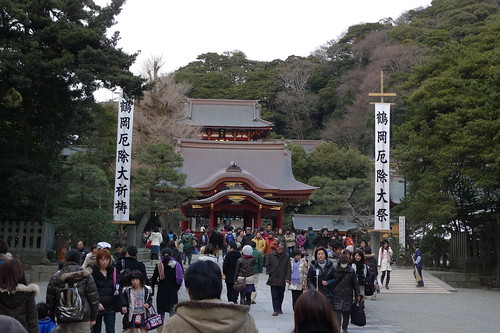
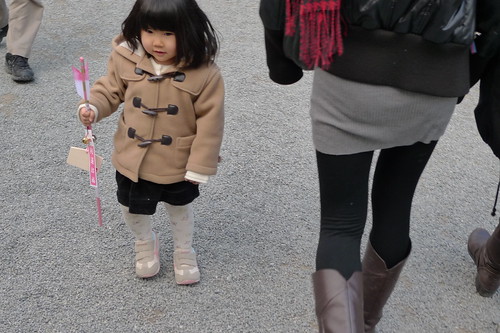
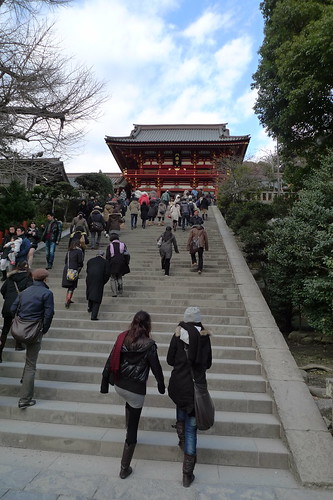
We went to check our fortunes by doing the omikuji.
Anna got a 'kyo' (curse/ bad luck).

Kong got a 'dai-kyo' (great curse/ even worse luck)
Because they both got bad predictions, they had to tie the strips of omikuji on a wall of metal wires.
Click here if you can't see embedded video
I got a 'kichi' (blessing/ good luck). So it was fine for me to keep it in my wallet.

I liked the courtyard of the shrine.

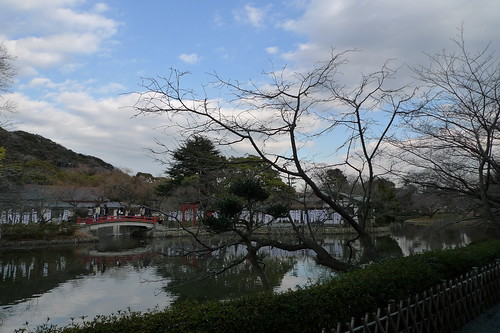
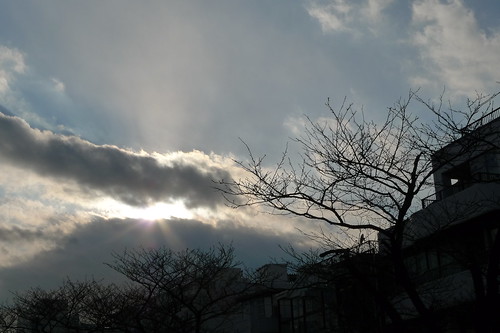
We then went to the Kotoku-in to visit the iconic Great Buddha of Kamakura. But not before we had some more dango outside the temple.
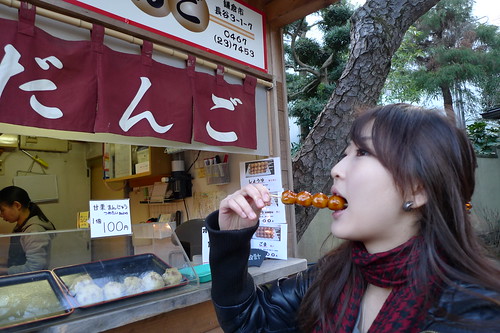
And there it was, the famous Kamakura Great Buddha. It dates from 1252 and was built inside a wooden temple before the building was washed away by a tsunami in 1498. The statue remained.
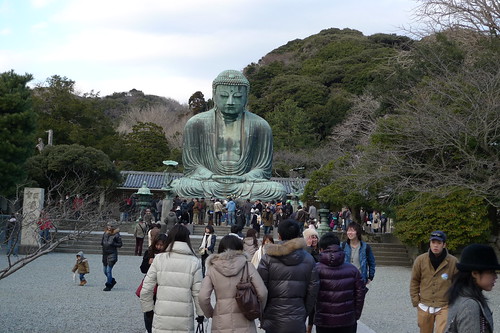
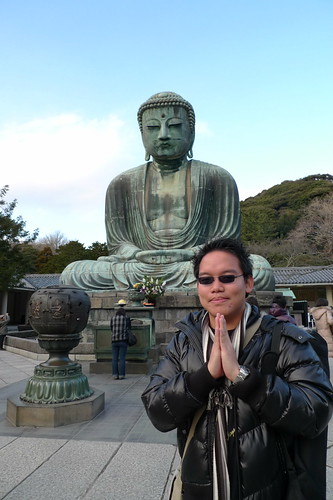
Anna thought the Buddha looked a little sad.
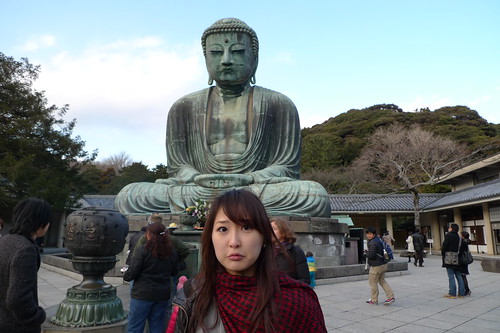
Kelly agreed.
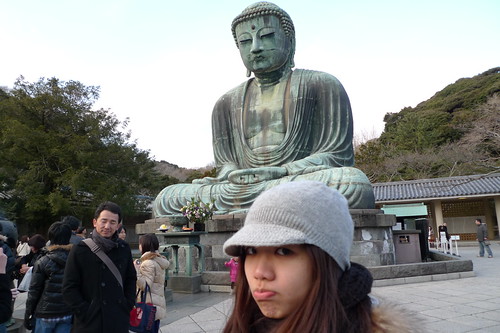
The statue, to my surprise, was hollow. And for 20 yen, we could explore its interior.

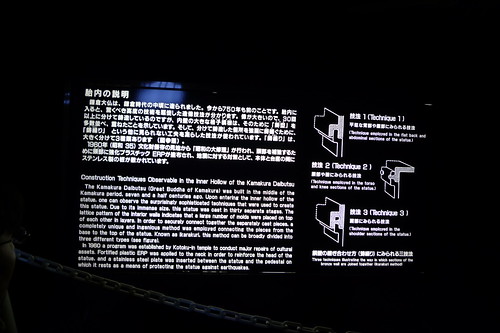
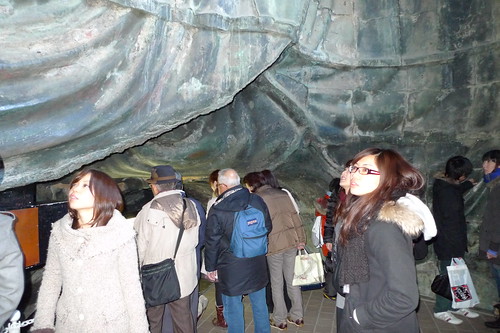
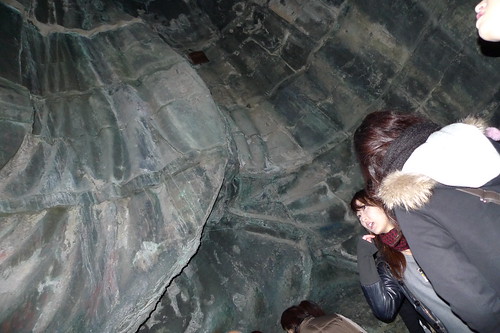
These girls were wearing T-shirts with the word 'Kamakura' on them.
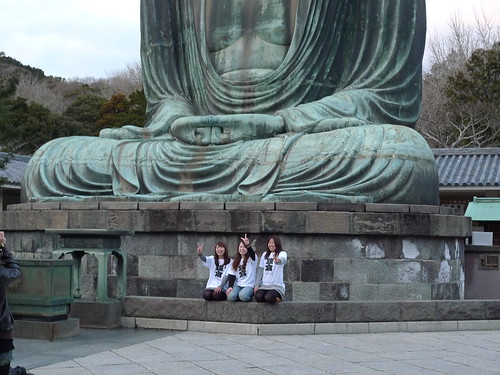
The sun was setting.
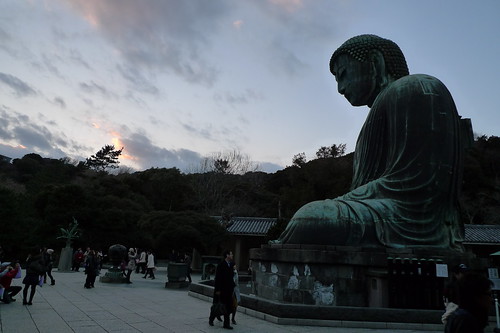
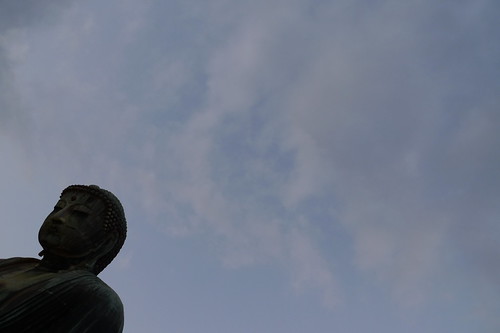
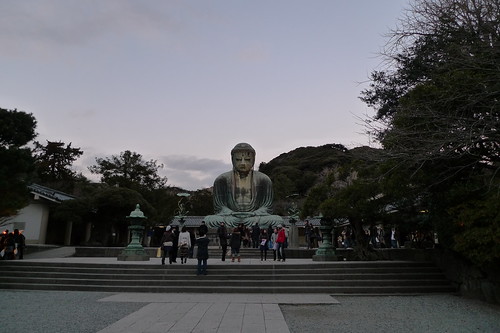
I just found out that Yasunari Kawabata, the Nobel Prize-winning author whose works had inspired my short films, LOVE SUICIDES, KINGYO and the upcoming WHITE FLOWER, used to stay in Kamakura. In fact, he actually died in Kamakura and was buried here too (many famous Japanese people were buried in Kamakura, including film directors Akira Kurosawa and Yasujiro Ozu).
His old house was pretty near the Big Buddha, so I decided to go there. But not before getting some taiyaki first.
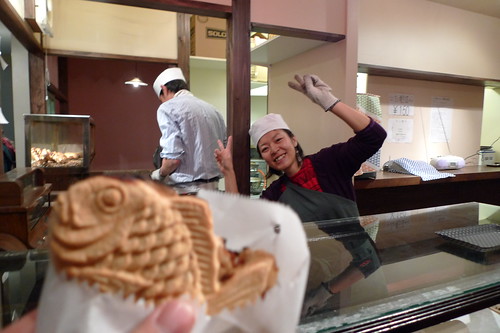
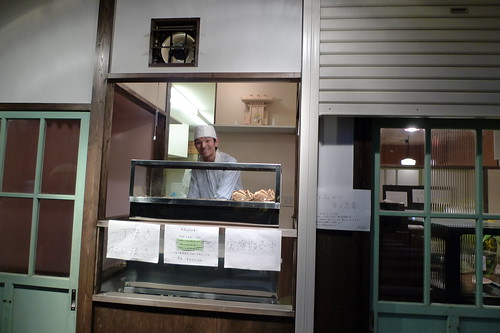
I wondered whether it was better to eat from the head first, or the tail first. Eating the head would kill the fish immediately so that it wouldn't have to suffer as you consume the rest of it. Eating from its tail seemed more like slow torture. So I chose the head.
That's Kawabata's house.
Too bad I couldn't get in.
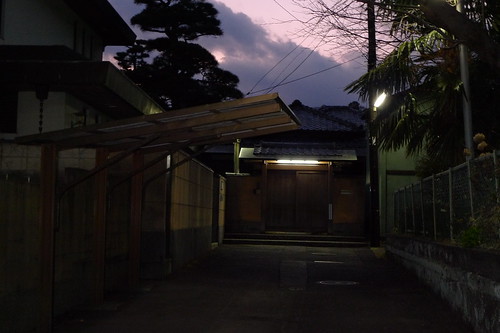


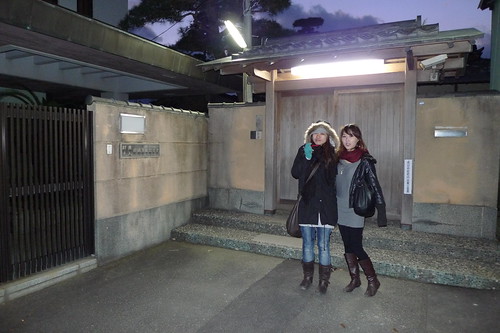
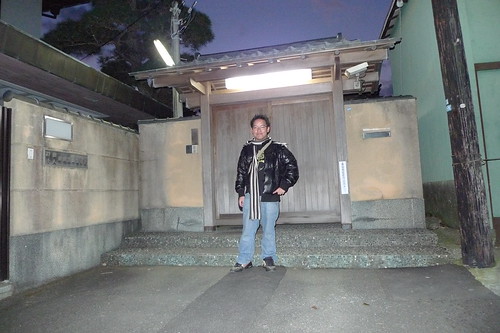
So little time, so many places in Kamakura that I would have wanted to visit, like the Five Great Zen Temples, or the Museum of Literature (that's where Kawabata's stuff are displayed, along with Natsumi Soseki and and Ozu's) etc etc.
Maybe next time.
She had wanted to shoot her place in a traditional Japanese house, and so her friend Anna, offered to let Kelly use her great-grandmother's house in Kamakura.
Yesterday, Kong and Kelly decided to go to Kamakura to look at Anna's house.
I decided to tag along because I've never been to Kamakura before.
We arrived in the morning at 10 to meet up with Anna. Kelly's the one with a white cap and Anna's the one on the phone.

That's the Kamakura station.

We started walking to Anna's great grandmother's house.

I think it was a 10-15 minute walk before we reached the house. Anna's great grandmother is already 100 years old and she had been living by herself in this house most of the time. The house had been sold to someone else recently, but the new tenants haven't move in.

As I entered the place, I cannot help but think of the very fine anime film, SUMMER WARS, by Mamoru Osoda, when Kenji followed Natsuki back to her 90-year-old great-grandmother's place.
Click here if you can't see embedded video


Anna paid her respects to her great grandfather.
Click here if you can't see embedded video



click here if you can't see embedded video

Anna's great grandmother's bedroom.

She was a painter and also a fashion designer.

Anna told me that this is a photo of her great grandmother, and Giorgio Armani.


As Kong and Kelly discussed the film, and the storyboards, I rested here, there was a heater underneath the table.

We then headed off for lunch.


I opted for some curry.


Anna had mentioned that Kamakura is known more for its confectionery and desserts, so it wasn't so surprising that the curry was a little sweeter than usual.
I decided to sample some of the sweet stuff in Kamakura.

That's a dango. It's some sort of rice dumpling, covered in red bean paste (there are different flavours to choose from)

And these were Kelly and my cups of amazake. It's a traditional sweet, low-alcoholic Japanese drink made from fermented rice.


We headed to the Tsurugaoka Hachiman-gū, the most important shrine in Kamakura. It was a Buddhist temple and was far larger than it is today. Until the '1868 Shinto And Buddhism separation order', when the Meiji government, for political reasons, decided not to mix Buddhism and Shinto, many Buddhist-related buildings in Tsurugaoka were destroyed.



We went to check our fortunes by doing the omikuji.
Anna got a 'kyo' (curse/ bad luck).

Kong got a 'dai-kyo' (great curse/ even worse luck)
Because they both got bad predictions, they had to tie the strips of omikuji on a wall of metal wires.
Click here if you can't see embedded video
I got a 'kichi' (blessing/ good luck). So it was fine for me to keep it in my wallet.

I liked the courtyard of the shrine.



We then went to the Kotoku-in to visit the iconic Great Buddha of Kamakura. But not before we had some more dango outside the temple.

And there it was, the famous Kamakura Great Buddha. It dates from 1252 and was built inside a wooden temple before the building was washed away by a tsunami in 1498. The statue remained.


Anna thought the Buddha looked a little sad.

Kelly agreed.

The statue, to my surprise, was hollow. And for 20 yen, we could explore its interior.




These girls were wearing T-shirts with the word 'Kamakura' on them.

The sun was setting.



I just found out that Yasunari Kawabata, the Nobel Prize-winning author whose works had inspired my short films, LOVE SUICIDES, KINGYO and the upcoming WHITE FLOWER, used to stay in Kamakura. In fact, he actually died in Kamakura and was buried here too (many famous Japanese people were buried in Kamakura, including film directors Akira Kurosawa and Yasujiro Ozu).
His old house was pretty near the Big Buddha, so I decided to go there. But not before getting some taiyaki first.


I wondered whether it was better to eat from the head first, or the tail first. Eating the head would kill the fish immediately so that it wouldn't have to suffer as you consume the rest of it. Eating from its tail seemed more like slow torture. So I chose the head.
That's Kawabata's house.
Too bad I couldn't get in.





So little time, so many places in Kamakura that I would have wanted to visit, like the Five Great Zen Temples, or the Museum of Literature (that's where Kawabata's stuff are displayed, along with Natsumi Soseki and and Ozu's) etc etc.
Maybe next time.